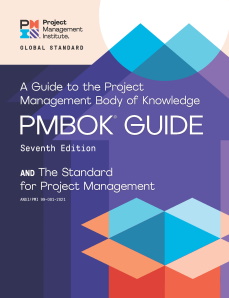
The BIM Industry’s Global Dilemma
- By Tarek Ghazzaoui, Eng. (senior BIM manager)
- on
The world is changing fast. Firms have a cut-throat choice of either changing and adapting to the world evolving around them, or having to exit the market (by closure, acquisition or merger.) One of the pillars of change is the “digitization” of a firm, which can be summarized as its reliance on technological tools, processes and standards that govern its practice. The more a firm is digital, the more it is heading in the right direction into the future.
The world of Building Information Modeling (BIM) is no different. It has changed so much in the last 20 years that the early users are already considered relics, and what was deemed a very complicated tool or process is merely a daily occurrence in today’s standards. However, through all the technical and technological advancements in this BIM industry, there is still a missing key element at the international level, which I label as “the BIM industry’s global dilemma.”
Let’s find out what I’m talking about exactly.
Table of contents
Note: Click to go to a specific section.
The BIM industry
“The concept of BIM has existed since the 1970s […], and the term ‘building model’ (in the sense of BIM as used today) was first used in papers in the mid-1980s. However, the terms ‘Building Information Modeling’ (including the acronym “BIM”) did not become popularly used until some 10 years later.” (Source: Building information modeling)
Fast forward to 2 years ago, according to Allied Market Research, “the global building information modeling market size was valued at $5,205 million in 2019, and is projected to reach $15,892 million by 2027, registering a CAGR of 15.2% from 2020 to 2027.” (Source: Building information modeling market size: Bim market analysis – 2027). Although it is hard to define the BIM industry in strict terms due its entanglement in other fields such as architecture, engineering, construction and operations, there is no doubt that the BIM industry is growing worldwide at an important rate.

As with any industry, the BIM industry was born out of worldwide groups, associations, organizations, institutes and entities in the private, non-profit, academic and government sectors. Entities such as buildingSMART, CanBIM, National Building Standard (NBS), among others, are very well known to professionals working in BIM due to their involvement in providing them with standards, guides, procedures, information and assets, among others.
Current issues
All industry professionals agree to some extent that there are current issues in the BIM industry. I personally do not believe they are major, but the cumulative minor issues amount to bigger ones, especially at the global scale. Depending on who you ask, you will get a different answer as to what the current issues are in the BIM industry, and what their severity, impact and causes are.
Depending on who you ask, you will get a different answer as to what the current issues are in the BIM industry, and what their severity, impact and causes are.
Tarek Ghazzaoui, Eng.
Senior BIM Manager
The identification of current issues is influenced and shaped by the professionals’:
- Personal experience - The personal experience influences the perception of industry issues due to habits, engrained workflows, exposure to resellers, etc.
- Industry - The industry in which the professional works matters because it dictates the needs of that profession (i.e. construction as a general contractor), the maturity of that industry, the availability of service providers and the competence of professionals in that industry.
- Market - The market where the professional works influences the perception of issues due to limitations, challenges and opportunities which stem from:
- Market maturity (i.e. BIM stages of firms in that market)
- Market competitivity (i.e. presence of competitors in that market)
- Market adaptability (i.e. BIM stages of firms in that market as a function of time.)
- Pool talent availability (i.e. qualified graduates and experienced professionals)
This is very closely tied to the country’s economy, and the construction sector more specifically.
For the sake of simplicity, I would like to classify current issues in the BIM industry in the following categories:

1. Technical issues (micro & macro level – one, many or all projects)
This is related to issues of technical nature in a firm, which mainly have to do with tools’ capabilities to perform certain tasks. Some keywords in this category are software collaboration, coordination, interoperability, plugins, modeling, documentation, scheduling, computational design, etc.
2. Project management issues (micro level – one or many projects)
This is related to issues of management nature on one or many projects, which mainly have to do with decisions, standards, processes and workflows, at the strategic and operational levels. Some keywords in this category are project management, BIM management, BIM coordination, BIM Execution Plan (BEP), quality control, design review, etc.
3. Project management issues (macro level – all projects)
This is the same as micro-level project management issues (on one or many projects), but at a macro level (on all projects in a firm).
4. Industry issues (state, provincial or national)
This is related to issues of any nature on an industry level, which mainly have to do with standardization, legal, requirements definition, collaboration, coordination, and BIM project phases. Some keywords in this category are project management, BIM management, BIM coordination, quality control, industry standards, legislation, etc.
5. Global issues (international)
This is related to issues of any nature on a global level, which mainly have to do with standardization, requirements definition, collaboration, coordination and BIM project phases. Some keywords in this category are project management, BIM management, BIM coordination, quality control, etc.
My focus is to discuss the last category, namely the “global issues (international)”, which contains THE most important issue of all categories mentioned above.
The global dilemma
Let’s talk about what this most important issue of all categories is. In my humble opinion, there is global dilemma in the BIM industry, which can be summarized in this statement:
There is no single not-for-profit international professional organization that is the subject matter source, reference, and single source-of-truth for building information modeling (BIM).
In other words, we need a single entity in the world to act as the BIM reference for BIM professionals. We find plenty of local, municipal, provincial, state and even national entities that play that role (or aim to do so in the future), but each develops its own standards based on its target audience and market.
For example, when we talk about project management, we think about the Project Management Institute (PMI). When we talk about HVAC, we think about the American Society of Heating, Refrigerating and Air-Conditioning Engineers (ASHRAE); and the list goes on for different industries.

QUICK ANECDOTE - I participated in the BILT 2019 (Digital Built Environment Institute) in Seattle, and in one of the sessions I attended, there was a panel discussion about contractors’ BIM assets. We discussed this and diverted from it, and I took the opportunity to share my thoughts on the exact topic of this article. I did mention that one of the major issues in the BIM industry globally is the lack of a centralized entity that defines, standardizes and manages all BIM-related topics, which also acts as the “authority” on BIM in the world. Some panelists along with some participants strongly agreed with this point and pointed out that it was the root-cause of other issues the BIM industry was facing in the US and Canada.
On that note, it is fascinating to me that we live in a globalized and connected world, yet we still work in our own little corner, just like we did in a pre-globalized and less connected world. Although the absence of a single BIM entity that acts as the global authority on BIM may not cause any issues directly in any market, it does create issues for the global market.
In my opinion, the issues caused for the global market by the absence of a global BIM entity are:
1. Decentralization of decision making
There is no central decision-making committee or body that oversees the entire global industry. The current ones are at a local, municipal, provincial, state or national level, which seek the interests of their own markets and prioritize them in their decision making. A global one is less bias because it does not favor any market or nation. The best way to describe what a centralized committee or body ought to do is what I learned in my marketing certificate at Concordia University: think global, act local.
2. Fragmentation of knowledge and assets
There is no comprehensive, complete, and standardized database for knowledge (including tutorials, lessons learned, knowledgebase, white papers, etc.) and assets (including libraries for design elements, construction elements, rendering elements, materials, etc.). The current websites that exist contain certain libraries that suit a certain target audience, and many are on a voluntary basis. There isn’t a one-stop-shop for all BIM-related assets for all stakeholders (architecture, engineering, construction, operation).
3. Non-standardization of standards and procedures
There is no global standard for BIM. The leading countries in the world in terms of BIM development and maturity in my opinion are Australia, the United Kingdom and the USA. However, there is no common standardization of definitions, standards and procedures including contracts, clash detection, Level of Development (LOD), Level of Information (LOI), Level of Accuracy (LOA), among others. This creates multiple standards in the world, with none being the prime one.
4. Redundancy and duplication of BIM efforts
There is a lot of duplication and redundancy of BIM efforts to achieve the same results or solve the same problems. Unfortunately, there are no “barriers to entry” for founding an institute, organization, group or even company anywhere in the world, so anyone can start a BIM entity that has the same vision and mission as an existing one. And since there is no single authority for BIM, there is more justification and motivation to start a new entity to address local needs.
5. Lack of compliance and enforcement
There is no compliance requirement or enforcement of overall BIM standards in the world. One recurring issue is that consultants can base their BIM standards on any standard defined in the world and adopt it locally. Sometimes, this is advantageous, and other times, it is not.
6. Increased loss of time and costs
All points mentioned above, and the one below for opportunity costs, contribute to a loss of time and costs at a global level. Although local, municipal, state, provincial or national entities feel proud to create guidelines, standards, procedures and workflows, it is definitely not an efficient way of working on a global scale. If we could combine the best brains in the world and sit them down at the same table to solve BIM problems together, we can come with a standardized global solution that everyone can adopt, as was the case in project management with PMI.
7. Opportunity costs for further development
All the time, efforts and costs “wasted” in the previous points, especially those that are redundant and duplicated, could have been invested stewardly in useful further development of the industry.
So now that we have discussed the global dilemma and the issues it causes, let’s discuss the ideal solution.
The solution

There may exist many solutions to this problem, and I will discuss my own point of view. As is usually my nature, I love tackling issues at their root cause. So, my proposition for solving the absence of a global BIM entity is not a patch for the current problem, nor is it a complete tare down of what was achieved. My main and sole focus is solving the problem, which is the absence of a global BIM body that acts as the authority on all BIM-related topics worldwide.
The solution is simple:
Create a not-for-profit international professional organization for building information modeling (BIM) and consolidate all existing ones into it
We can call it whatever we like, as long as the name is short and descriptive. For the purposes of this article, I will henceforth call this entity:
International Building Information Modeling Institute (IBIMI)
I believe that IBIMI should be done somewhere in the USA for many reasons, including the current BIM infrastructure, market maturity, user base, industry standards, industry requirements, number of BIM projects, among others.
Although oversimplified, the major 4 steps that should be taken to ensure the success of IBIMI are as follows:
STEP 1: Get financial income
One of the most important factors to ensure the success of IBIMI is to ensure significant financial profit. With financial means, the next points are easier to achieve. I omit to discuss many important details (i.e. start up, growth, prioritization of revenue streams), but the revenues and expenses should be as follows:
Revenues
- Professional memberships
- Examination fees / certifications
- Government grants
- Conferences, seminars and events
- Professional development assets (guides, manuals, plans, etc.)
- Advertising
- Personal contributions
Expenses
- Certification
- Membership
- Salaries
- Management
STEP 2: Develop global industry standards, procedures and certifications
One of the most important factors to ensure the success of IBIMI is to create global standards, procedures and certifications. These should be created with an international purpose but adapted to local markets. Also, IBIMI should hold international conferences, publications and awards in BIM.
STEP 3: Open local chapters worldwide
IBIMI should have offices in major cities around the world, with multiple chapters per city. The vision is to set up a worldwide entity, and not only focus on one country or continent.
STEP 4: Acquire, and consolidate all entities globally
This step is the most crucial and difficult to achieve. IBIMI needs to invite all entities globally to join its vision and mission by dissolving themselves and joining it. Those who are not interested in willingly joining should be acquired. In all cases, all members in management positions should be integrated into IBIMI, along with all protocols, guides, standards, processes, certifications, awards and members.

I strongly believe that IBIMI should also release a standardized guide to BIM that is applicable in any market in the world, just as the Project Management Body of Knowledge (PMBOK) is.
This is to be complemented with standards, white papers, libraries, certifications and awards related to BIM.
Case study: Project Management Institute (PMI)
Based on my experience, there is no need to reinvent the wheel if it already has been invented. In the context of the present article, IBIMI’s business model should replicate an existing and successful one with a similar institute.
The ideal candidate in my opinion is the Project Management Institute (PMI). “The Project Management Institute (PMI) was founded at the Georgia Institute of Technology in 1969 as a non-profit organization, and incorporated in the state of Pennsylvania later that year.” (Source: Project management Institute)
It was founded by the following individuals: (Source: Project management Institute)
- Ned Engman (McDonnel Douglas Automation)
- James Snyder
- Susan Gallagher (SmithKline & French Laboratories)
- Eric Jenett (Brown & Root)
- J Gordon Davis (Georgia Institute of Technology)
Fast forward to 2019, here are some quick facts about the PMI based on the 2019 annual report (Source: 2019 Annual Report PMI):
*(Source: Project management Institute)
**(Source: 2019 Annual Report PMI)
The PMI develops standards in the following categories:
- Foundational standards
- Practice standards and frameworks
- Practice guides
- PMI Lexicon of Project Management Terms
And issues the following certifications:
- Certified Associate in Project Management (CAPM®)
- PMI Agile Certified Practitioner (PMI-ACP®)
- PMI Professional in Business Analysis (PMI-PBA®)
- PMI Scheduling Professional (PMI-SP®)
- PMI Risk Management Professional (PMI-RMP®)
- Project Management Professional (PMP®)
- Program Management Professional (PgMP®)
- Portfolio Management Professional (PfMP®)
Also, “PMI honors project management excellence in various categories, e.g.: project professionals, organizations, scholars, authors and continuing professional education providers.” (Source: Project management Institute).

Although the world was a much different place in 1969 when the PMI was founded, its business model was refined through decades of operation, and it grew to be a truly international entity. It also holds a strong financial position and a global recognition of its authority over project management practices.
IBIMI should replicate what the PMI has achieved, and avoid a steep learning curve by learning from it. I think it’s a great idea to hire some PMI managers and executives as consultants (or board members) to guide the BIM industry as well. I will not go into the details of how IBIMI should be set up or run, as this topic may be dedicated to a separate article in the future.
Final thoughts
I hope this article shed some light on an issue that I never heard discussed in any conference, seminar, webinar, user group, blogs or forums. This global dilemma for the BIM industry is the source of many current issues that have local symptoms that will only get amplified through time.
The bottom line is, we need a centralized global “authority” for the BIM industry to set common standards, procedures, guidelines, definitions, processes, workflows, certifications, awards and a knowledge base. The current “free for all” business model isn’t efficient, and although it addresses needs at an individual or several markets’ level, it creates multiple standards in the world, duplicates efforts and fragments BIM development.
On a personal professional level, I would be willing and interested in contributing to the strategy, effort and execution of creating this worldwide organization that I labelled the International Building Information Modeling Institute (IBIMI) in this article.
- WHAT WE NEED is a few BIM champions to lay the foundation for what is to become the international BIM institute, just as the PMI had 5 champion founders that laid the foundation for what the PMI has become today.
- WHAT WE NEED is a consolidation of all BIM entities worldwide into one united powerful organization that is respected and recognized as the ultimate authority in the BIM industry, with chapters in almost every country.
- WHAT WE NEED is a centralization of the brains of the BIM industry to work on common denominator initiatives, standards, processes and guides.
What we need is global leadership in the BIM industry.
Thank you for taking the time to read my blog article and I’ll see you again soon.

Tarek Ghazzaoui, Eng.
Senior BIM Manager
Share now!
Resources
Works cited
“Building Information Modeling.” Wikipedia, Wikimedia Foundation, 21 July 2021, https://en.wikipedia.org/wiki/Building_information_modeling.
“Building Information Modeling Market Size: Bim Market Analysis – 2027.” Allied Market Research, www.alliedmarketresearch.com/building-information-modeling-market.
“2019 Annual Report PMI”. Project Management Institute, https://www.pmi.org/annual-report-2019.
“Project Management Institute.” Wikipedia, Wikimedia Foundation, 9 July 2021, https://en.wikipedia.org/wiki/Project_Management_Institute.
About the author

Tarek Ghazzaoui, Eng. (senior BIM manager)
- articles by Tarek, bim association, bim industry, bim institute, bim market, featured

